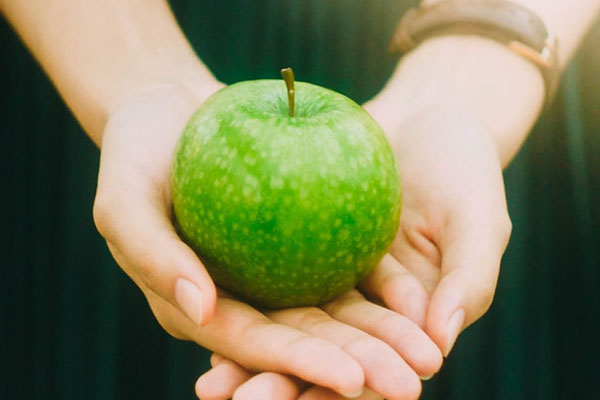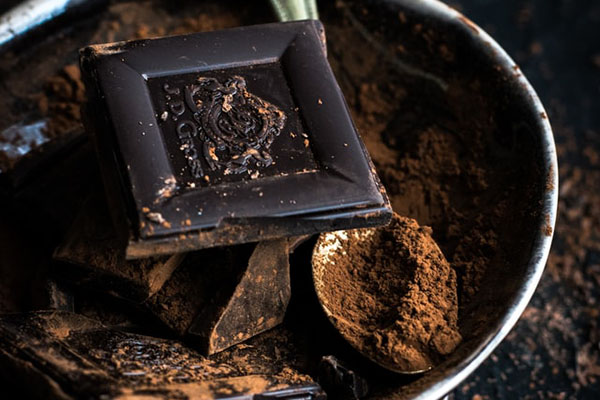What’s the difference between astringency and bitterness? From the way people describe the two terms – often interchangeably – it seems they are concepts that many people find difficult to define separately because of how they are intertwined.
The best way I’ve learnt to separate the two is identifying astringency as a feeling and bitterness as a taste. They often, but do not always, occur together.

Astringency is an acute dryness in the mouth. An experience of astringency without bitterness may occur sipping dry wines or soda water, eating a green apple or guava, or just about any unripe fruit. It should feel as if your tastebuds are retreating. The opposite of astringency is juiciness.
Bitterness is a sharp taste that your palate recognises as one of the five taste receptors (the other four are sweet, sour, salty, umami/savoury). To experience bitterness without astringency, try rocket, mustard, radish, or very dark chocolate. The opposite of bitter is sweet.

So why are astringency and bitterness often confused for each other? It’s because both are ‘sharp’ sensations, which is why they are often co-pilots. But once you separate astringency as a feeling and bitterness as a taste, then you can start to recognise how the two contribute to the flavour of tea.
The presence of neither astringency nor bitterness are inherently undesirable in tea as both factors give tea its complexity, especially in the interplay between other flavour components. But of course too much of either have tea drinkers pushing away their cup, so let’s talk about ways to appreciate astringency and bitterness while preventing the bad kind.
First, a caveat: what is too astringent or too bitter for one person may be absolutely perfect for another, so individual preference plays a part in what is an ‘ideal’ cup of tea. Generally, though, you can use brewing parameters to control these.
Aspirational astringency
Astringency is caused by polyphenols, such as tannins, in tea. Most people assume that means black tea (红茶) will have the most astringency, but tea is not like wine where the darker the liquor the higher the tannin content. You can taste astringency in most types of tea but they are most prominent in young raw pu’er, green and black tea and least prominent in white tea, tippy teas and ripe pu’er. Oolongs such as phoenix dancongs often start as aromatic and fruity or floral but a few infusions later will start producing astringent liquor, which is part of its appeal.
Astringency in tea is measured by ‘length’, which is the holding power of flavour on the palate. I kind of think of it like the old school calligraphy practice of sprinkling powder on your paper to fix the ink: drying it so the ink stays.
Desirable astringency aids in the development of hui gan (回甘) ‘returning sweetness’, where astringency does an about turn and delivers a juiciness in the throat. Part of this is your saliva interacting with the polyphenols that, given enough time thanks to astringency holding on tight, delivers this.
High temperature water will encourage astringency, so if you find that your brew is excessively astringent, try reducing the water temperature.
In more western style teas, especially those described as ‘brisk’, you will find that adding milk will take the edge off astringency because the creamy sensation of milk balances out the drying sensation of astringency. Many of these teas are designed for milk.
Balancing bitterness
A high level of bitterness is somewhat less desirable but is an important taste factor in the overall flavour profile of tea. Bitterness comes from both the growing conditions of the tea plants – if the biome is hostile, the tea will produce leaves with higher bitterness levels to discourage pests – and sometimes the size of the leaves, where small and/or broken particles will release bitterness faster in the cup than whole leaves: think fannings in teabags and CTC tea.
This means bitterness is often inherent in the tea rather than extracted in the brewing process. However, lower temperature water and shorter steeps tend to pull back the bitterness, so if you find yourself with a cuppa that’s too bitter for your liking, try fixing it in the steep.
If you have a western style tea that’s bitter, you will often find that adding sugar will balance the bitterness. Many standard teabags on offer in the world today are designed to hold sugar, which is why tea connoisseurs are suspicious of the quality of the tea in teabags.
I hope this post has gone some way to explaining the difference between astringency (mouthfeel) and bitterness (taste) so the next time you take a sip you can identify each individually.
Tea Intersection is a series of explainer posts that will explore related concepts in tea with the aim to provide clarity through disambiguation.